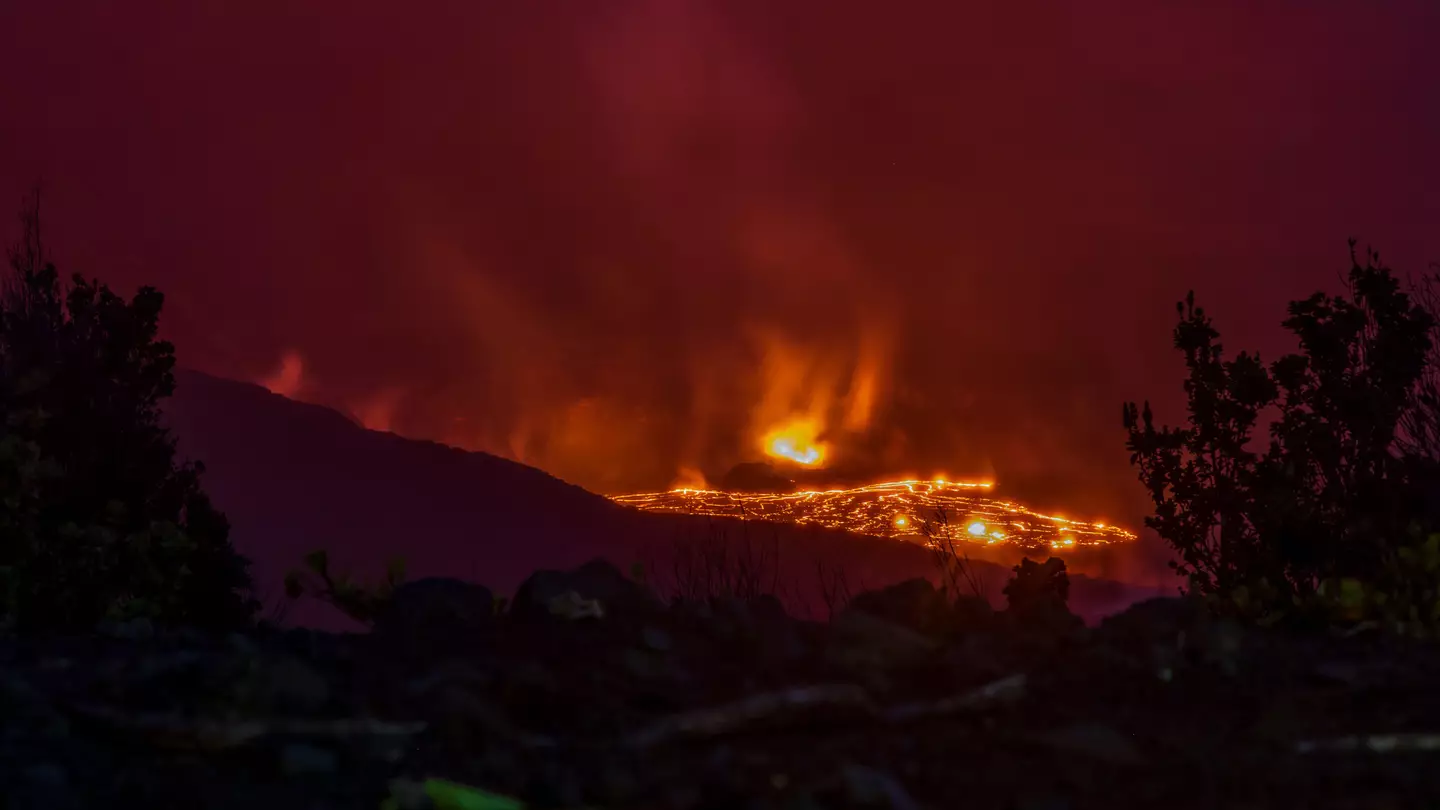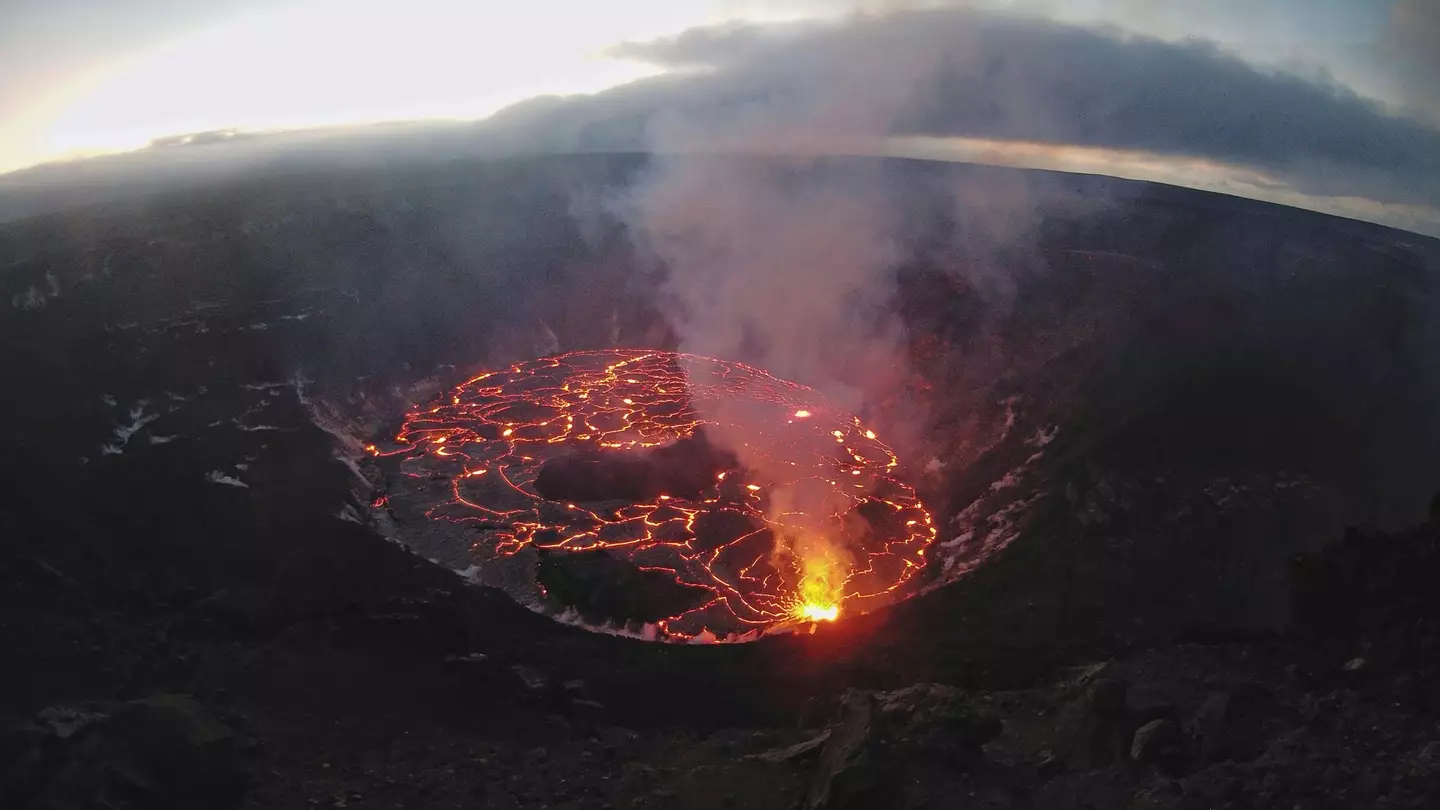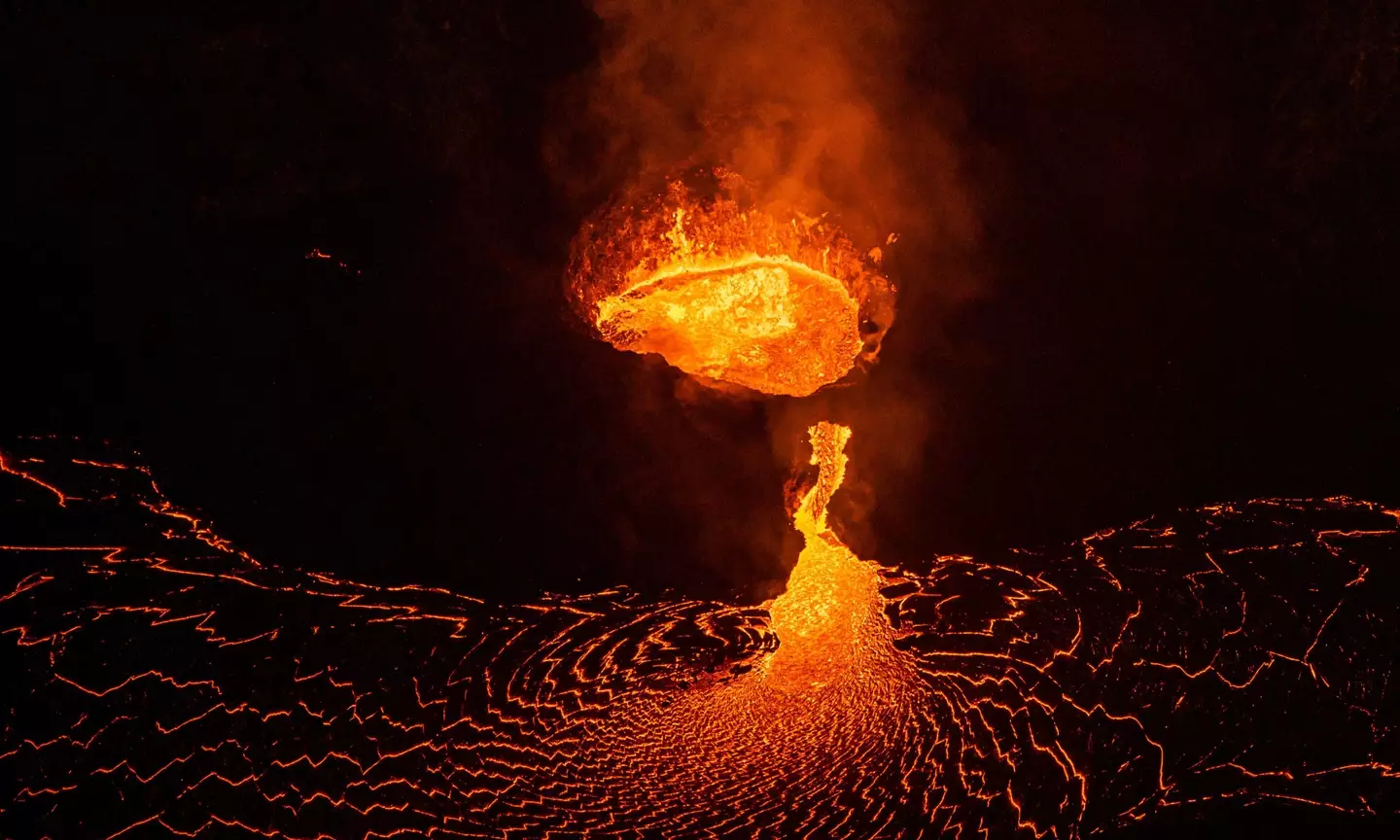
A 75-year-old man has died after falling 100ft into a volcano in Hawaii, officials have confirmed.
The man, who has not yet been named, fell from a viewing platform above the Kilauea volcano on Hawaii’s Big Island late on Sunday night (2 January).
Firefighters and Hawaii Volcanoes National Park rangers searched for the man after his family reported him missing in the early hours of the next day, eventually finding his body below the crater rim of the viewing area.
A helicopter was then brought in to recover the body at around 8am.
In a statement, the National Park Service said: “After searching for the man in the darkness, National Park Service rangers and Hawaiʻi County firefighters located the man’s body about 100 feet below the crater rim, west of the Uekahuna viewing area at the summit of Kilauea volcano.
“Park rangers, assisted by helicopter, recovered the body around 8am.”

An investigation into the man’s death has now been launched by the National Park Service.
Park spokesperson Jessica Ferracane said the site where the man was found is closed to the public, and that there are multiple barriers and signs warning people not to enter.
She said the specific place where he appears to have fallen is about 200 feet beyond those warning signs.
“He knew he was in a closed area,” Ferracane told West Hawaii Today.
Since the Kilauea volcano erupted back in September, people have flocked to the national park to catch a glimpse of the lava.
The eruption has caused a number of ‘significant hazards’ to the local area, such as high levels of volcanic gas, which creates airborne health risks.
Other hazards also include volcanic glass fragments and rockfalls.

In an update on Tuesday 4 January, the United States Geological Survey said the recent eruption at the summit of Kilauea had ‘paused’.
It said: “The summit eruption of Kīlauea Volcano, within Halemaʻumaʻu crater, remains paused. Similar pauses in recent weeks have ranged in duration from 1 to 3 days. Inflationary trends began around 2 AM HST this morning and recovery of tilt suggests the eruption will restart within the next 24 hours.
“All recent lava activity has been confined to the crater, and there are no indications of activity migrating elsewhere on Kīlauea.”
The update added: “This new eruption at Kīlauea's summit is occurring within a closed area of Hawaiʻi Volcanoes National Park. Therefore, high levels of volcanic gas are the primary hazard of concern, as this hazard can have far-reaching effects downwind. Large amounts of volcanic gas—primarily water vapor (H2O), carbon dioxide (CO2), and sulfur dioxide (SO2)—are continuously released during eruptions of Kīlauea Volcano. As SO2 is released from the summit, it reacts in the atmosphere to create the visible haze known as vog (volcanic smog) that has been observed downwind of Kīlauea. Vog creates the potential for airborne health hazards to residents and visitors, damages agricultural crops and other plants, and affects livestock.
“[…] Additional hazards include Pele's hair and other lightweight volcanic glass fragments from lava fountains that will fall downwind and dust the ground within a few hundred meters (yards) of the erupting fissure vent(s). Strong winds may waft lighter particles to greater distances. Residents should minimize exposure to these volcanic particles, which can cause skin and eye irritation.
“Other significant hazards also remain around Kīlauea caldera from Halemaʻumaʻu crater wall instability, ground cracking, and rockfalls that can be enhanced by earthquakes within the area closed to the public. This underscores the extremely hazardous nature of the rim surrounding Halemaʻumaʻu crater, an area that has been closed to the public since early 2008.”
Featured Image Credit: AlamyTopics: US News